Planning an Alaska Cruise? Don’t Book Anything Until You Know the Best Times to Go and What to Expect
Signing up for credit cards through partner links earns us a commission. Terms apply to the offers listed on this page. Here’s our full advertising policy: How we make money.
INSIDER SECRET: June and July are the best time to enjoy Alaskan fishing and whale watching. But other seasons offer their own unique benefits, too!
Alaska is probably the most beautiful place I have ever visited. An Alaskan cruise offers the opportunity to visit many parts of Alaska and to see certain parts that are only accessible by boat, like glaciers and the Inside Passage.
But the time of year that you visit Alaska can dramatically influence the type of experience you have. Spring offers action-packed whale watching. In summer the glaciers get active. Fall brings great bear sightings and salmon spawning.
If you are looking for a certain experience, you’ll want to make sure you visit at the right time of year so you don’t miss out.

There is no perfect time to visit Alaska. Each season offers something unique. Here is how to choose the best time to take an Alaska cruise for you.
What’s the Best Time to Take an Alaska Cruise?
I have taken Alaska cruises during all the major seasons and can promise you that no two are alike, from the weather to the wildlife to the cost of tickets.
Most Alaska cruises run between late April and early September, with peak season in June and July.
Here is what you can expect from each cruising season.
Early Season (Late April – May)
The start of Alaska cruising is the beginning of May for most cruise lines. However, the two biggest Alaska cruise companies, Holland America and Princess, offer itineraries that start in April.
In spring, Alaska is just starting to emerge from its harsh winter. You can expect the coldest weather, some snow still on the ground, with lows in the 40s and highs in the high 50s.
Cruises are rarely sold out during the early season which means it is the best time to shop for good deals on cruise fares. It also means that you can enjoy ship offerings (like specialty dining, activities and entertainment) with fewer crowds.
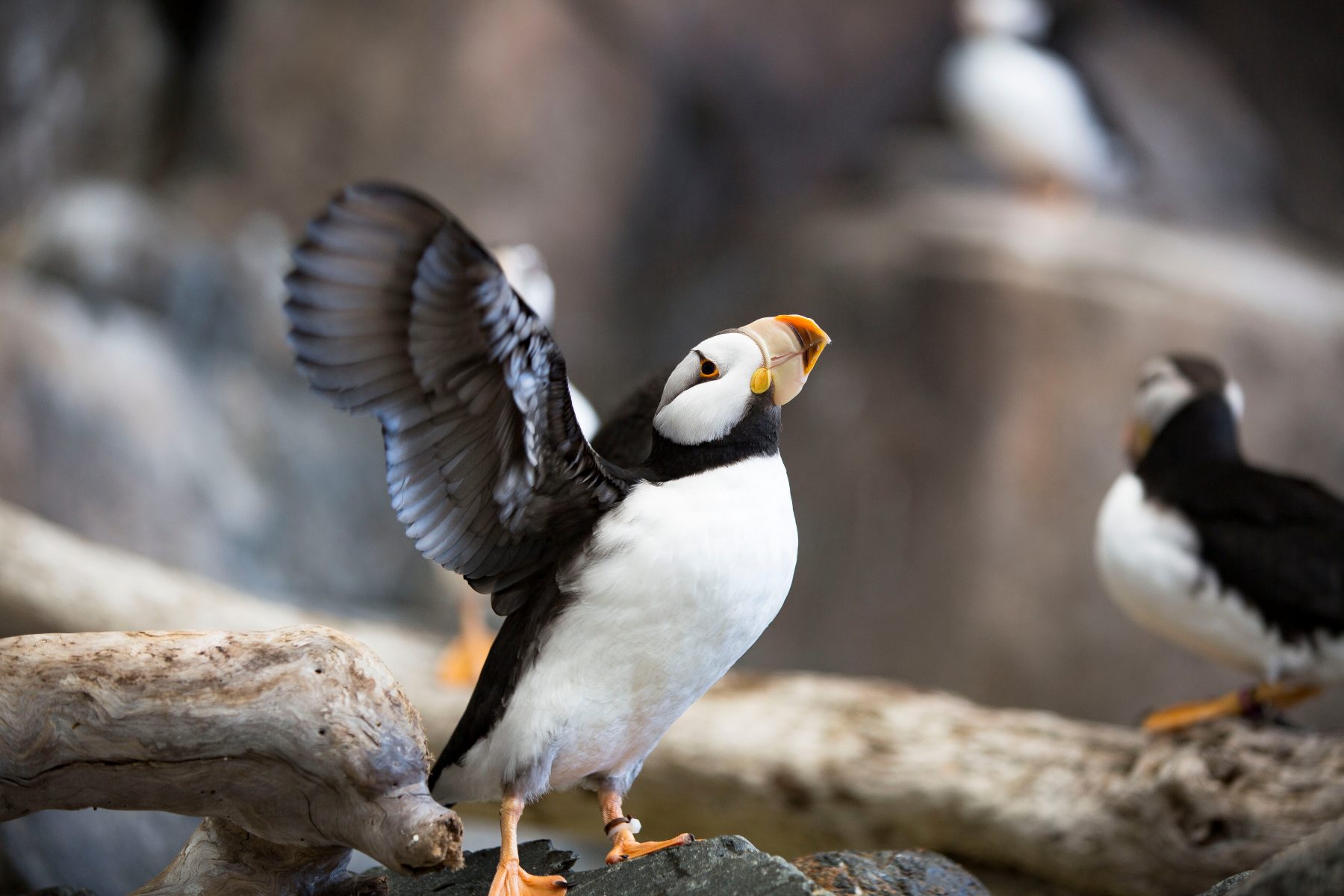
Some cruises offer discounted excursions during this time to help motivate travelers to try onshore activities. But if you have a certain excursion in mind, be sure to call ahead and see if the activities you want are available. Some, like kayaking, may not be possible yet because of the weather.
This can also be a great time to visit if you are looking for wildlife. Many of the animals are just coming out of hibernation or heading to the shores to eat after a long winter. It is also when seabirds migrate north for the summer, making spring the absolute best time to birdwatch in Alaska.
Advantages of Early Season: Prime bird watching and active wildlife in view. Whales are beginning to migrate and feed, offering decent whale watching. Cruise ships are less busy and cruise fares are at their lowest. Disadvantages of Early Season: Coldest weather, glaciers are stagnant and some excursions may not be available yet. Waves are higher than usual, making it undesirable for those prone to seasickness.Early season has a lot to offer, especially for those visiting Alaska for the wildlife and you can save money by traveling early. Many cruise lines have HUGE incentives for early travelers which might allow the budget-conscious to experience Alaska for a fraction of what it costs during the busier months.
Summer Season (June and July)
June and July mark the main Alaskan cruising season, the time most people want to go. Alaska experiences its warmest months with lows in the 50s and highs in the 70s. Because it is busy, it is also the most expensive time to visit Alaska.
However, there are significant advantages to exploring Alaska in summer. Whale watching is in full swing since most of the whales have reached Alaskan waters and begun feeding. They are active at the surface, making sightings a near-certainty (in fact, most excursion companies GUARANTEE whale sightings during this time).
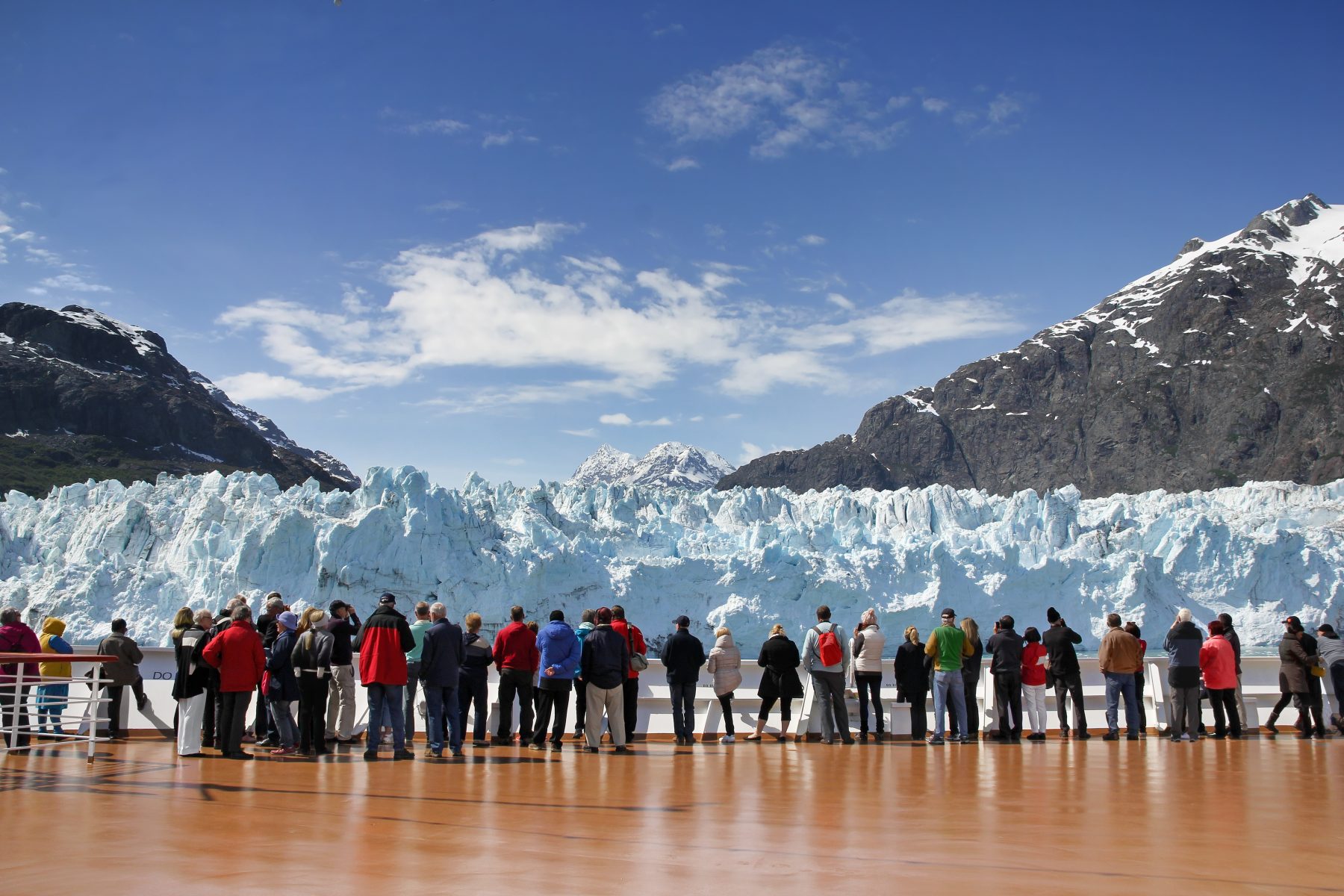
Since the state is at its warmest in summer, this is when the glaciers are the most active. You will certainly see them “calving” (pieces breaking off the edge of the glacier and into the ocean) and hear the distinct and deafening sound of “white thunder,” the loud crack that glaciers make when they break off into an iceberg.
July is one of the best months for recreational fishing. King salmon are in season, as are sockeye salmon, halibut, arctic char and many other popular species. Cruise lines offer fishing excursions at nearly every Alaskan port, but be sure to call before you go to find out the rules for bringing your catch back aboard. Some cruise lines will freeze it for you, others may offer to cook your catch for your table at dinner and others require you to ship your catch home through UPS or FedEx.
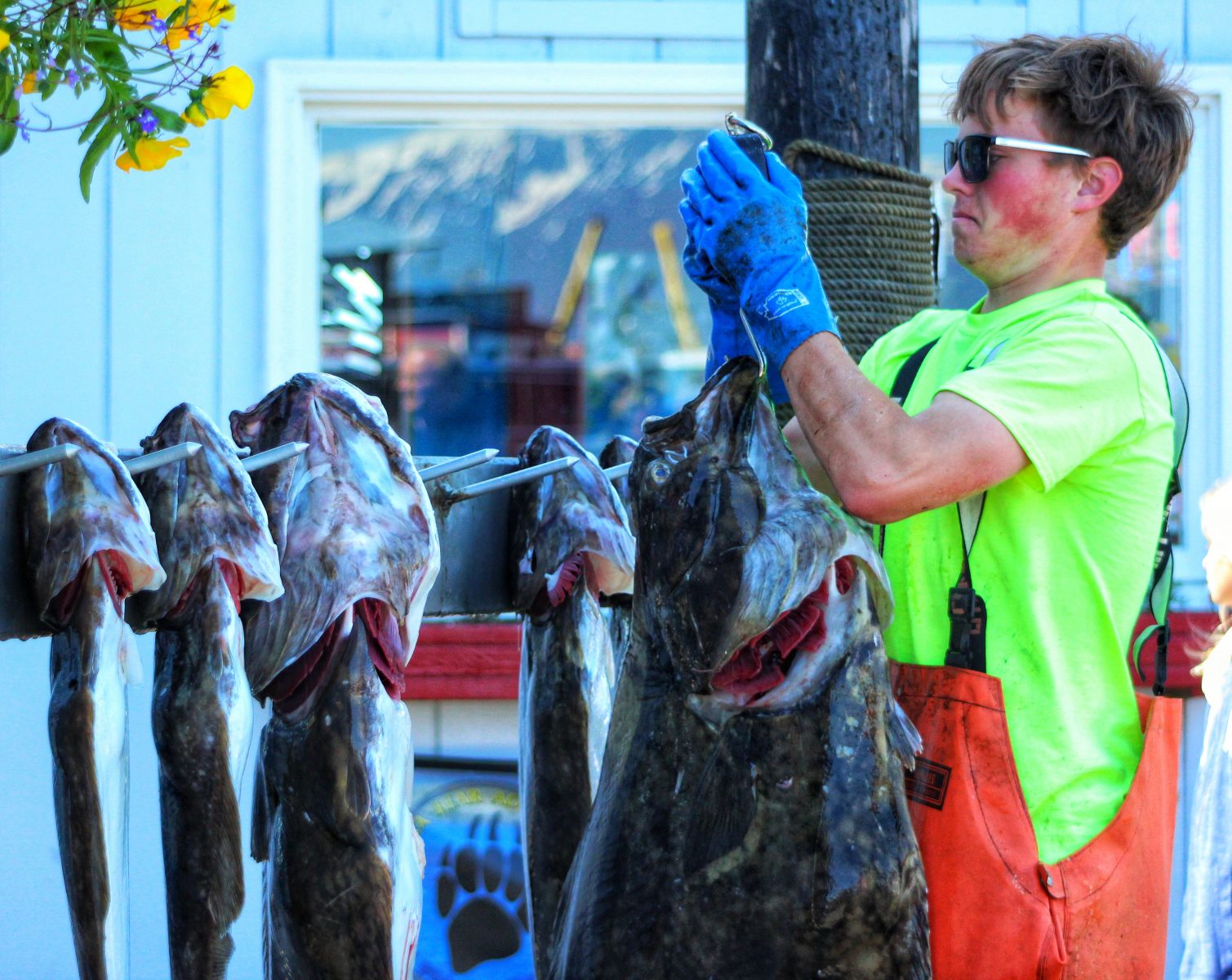
Summer solstice (the longest day of the year) is at the end of June. In this season, Alaska’s daylight lasts about 20 hours per day. The sun usually doesn’t set until around midnight, rising again around 4am. This can cause jet-lag-like symptoms for some travelers (which might be an incentive to purchase an inside cabin).
Advantages of Summer Season: The absolute best time to experience Alaska’s glaciers. It is also a good time to go whale watching. Wildlife like sea lions, porpoises and otters are most active. Great recreational fishing. Warmest weather. Disadvantages of Summer Season: Peak season means peak crowds and the highest prices. Bear, moose, Dall sheep and other land-based wildlife tend to move inland, making them harder to spot. With 20-22 hours of daylight per day (depending on how north the ship is), it can be difficult to get good sleep and some travelers experience jet-lag-like symptoms.While many are turned off by visiting Alaska during the summer when the prices and crowds are at their peak, it offers several unique opportunities and the warmest weather. If you are visiting Alaska to experience the glaciers or to enjoy great fishing, summer is the time to go.
Late Summer (August)
One of the most underrated times to visit Alaska is August. While cruise lines don’t offer “discount” pricing during this time, prices tend to be lower than in June and July, making it more affordable to take an Alaskan cruise. You can still experience much of what June and July have to offer, plus a few unique experiences like the great salmon spawn.
Looking to see bears? Well, you are nearly guaranteed to see them enjoying the limitless feast of the great salmon spawn of late summer. Last year, while visiting Ketchikan (specifically Neet’s Bay via float plane), we saw six grizzly bears within about 250 feet of us, feasting on a sea of salmon in the river. Hiking back, we had to take a detour because another grizzly was lying on the trail, enjoying his own fish feast inland. We saw bears at every single Alaskan port we visited. The fish also attract bald eagles.
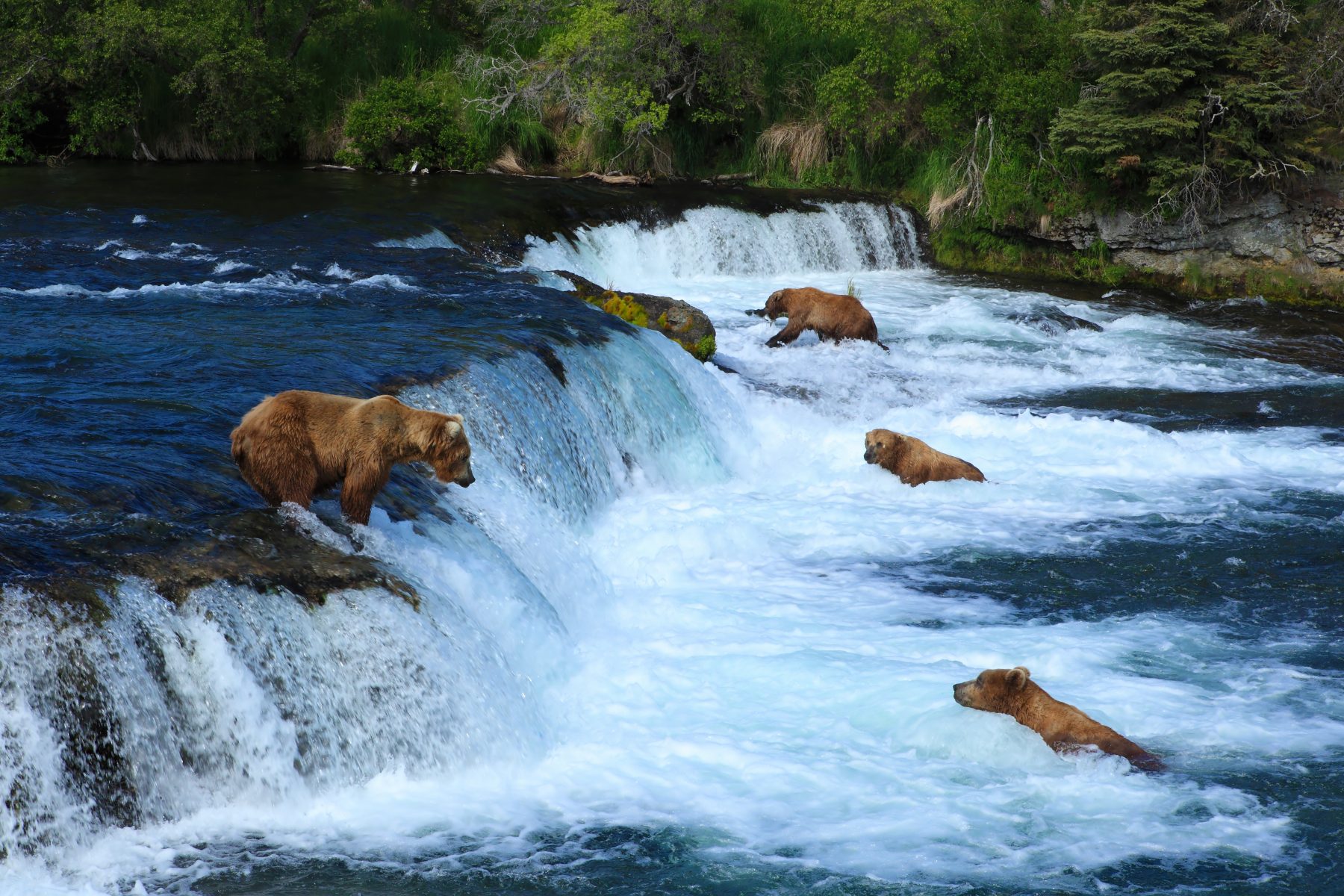
Late summer can also be a good time to see whales as they begin to move to southern Alaska in preparation for their southern migration. During my cruise last August, we saw more than 100 whales, to the point that we got far less excited about spotting them off the side of our ship.
Another advantage of late summer is that you can often get the warm weather of the summer but the shorter days make it easier to get a good sleep. In August it will start to get dark around 10pm, as opposed to midnight in July.
Advantages of Late Summer: Seeing all the wildlife as the salmon spawn is a once-in-a-lifetime experience. It’s the best time to see bears, moose and eagles. Whale watching is also at its peak in southern Alaska. Prices are generally more affordable than in peak season. Disadvantages of Late Summer: Glaciers have started to go dormant. Rainfall is at its highest (around 50% of days in August experience rain). Fishing season is mostly over.August might be my favorite time to go for the good travel deals, smaller crowds, whale watching and the salmon spawn with the wildlife it attracts (I’m obsessed with this experience). The increase in rainfall can be a big negative for many people. The glaciers are also far less active.
Fall Season (September)
This is it for the Alaskan cruise season. Many cruise lines have already ceased their Alaska operations in the fall but the major providers are still running a few ships. The crowds and prices are probably at their lowest. I have seen crazy incentives like onboard credit equal to the cost of the room.
The single best reason you might want to visit Alaska during the fall is to experience the Northern Lights. The end of August and September are the only times you can expect to see these on a cruise.
The northern lights alone can justify a trip. This is an experience that you can’t understand or appreciate until you have seen them in full force.
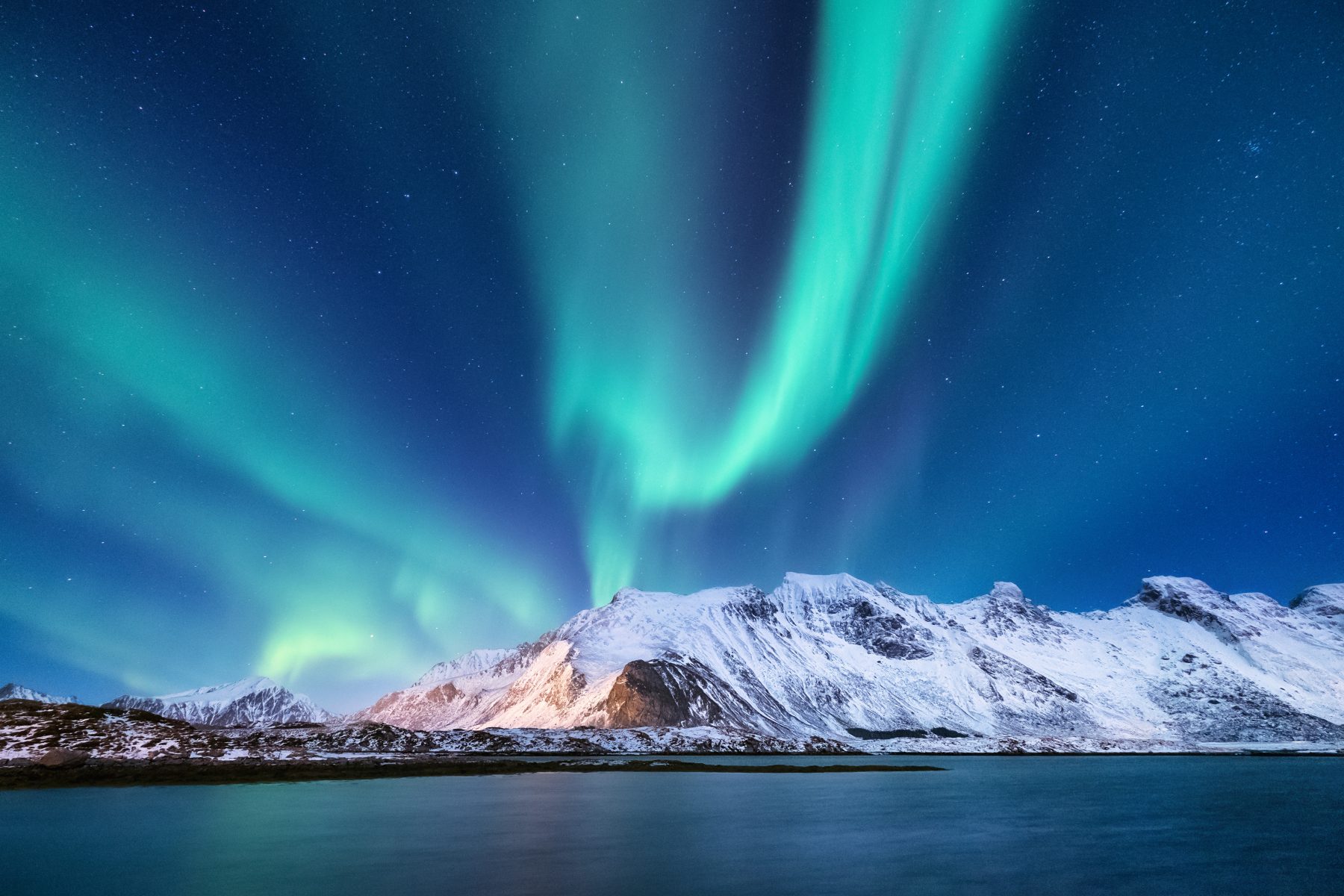
According to the Alaska Department of Fish and Game, moose, caribou and muskoxen all mate during this time, so they are active in open areas while they search for a mate or spar for dominance within the herd.
Fall colors peak in Alaska in fall, making it a great chance for landscape and wildlife photographers to get some epic shots.
Advantages of Fall Season: The northern lights are the strongest incentive to take an Alaskan cruise in fall. Photographers can capture the color, with good chances of seeing rare inland animals like moose, muskoxen and caribou. Great last-minute deals are usually available. Chances of seeing beluga whales. Disadvantages of Fall Season: Rainfall is still around 50% and the weather is starting to get colder (similar to early-season weather). Bears have moved inland to begin hibernation. Fishing is mostly closed. Glaciers are dormant. Many excursions will be unavailable.Visiting Alaska during the fall offers the full force of autumn colors and good chances of seeing the Northern Lights. The crowds are the lowest of any cruising season, allowing you to just enjoy Alaska in its purest form.
Bottom Line
If you are looking to take an Alaskan cruise, you won’t be disappointed, but each season can offer dramatically different experiences, so it is important to know what you hope to see and to plan your itinerary and dates accordingly.
- Early Season (April and May): Great cruise deals and smaller crowds. Prime bird-watching season, especially for rare seabird and songbird species. Decent whale watching opportunities.
- Summer Season (June and July): Peak season with the biggest crowds. Alaska is at its warmest. This is a great time to enjoy Alaskan fishing and whale watching, and the best time to see active glaciers.
- Late Summer (August): Prices start to drop a little from peak season, but the weather is still warm. Great time to see big wildlife like whales, bear, eagles and moose. Plus, the salmon spawn is in full swing.
- Fall Season (September): Lowest prices with the best incentives. Small crowds allow you to enjoy Alaska at its finest as it shows off its fall colors. Great for photographers and naturalists. Great opportunity to see the Northern Lights.
No matter when you choose to go, you won’t be disappointed. If you have visited Alaska in one season, try a trip during a different season. They often feel like completely different worlds.
What season sounds like your favorite?
For the latest tips and tricks on traveling big without spending a fortune, please subscribe to the Million Mile Secrets daily email newsletter.Editorial Note: We're the Million Mile Secrets team. And we're proud of our content, opinions and analysis, and of our reader's comments. These haven’t been reviewed, approved or endorsed by any of the airlines, hotels, or credit card issuers which we often write about. And that’s just how we like it! :)
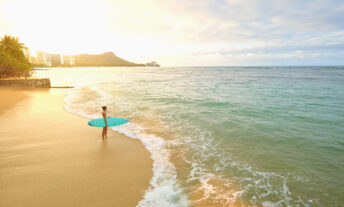
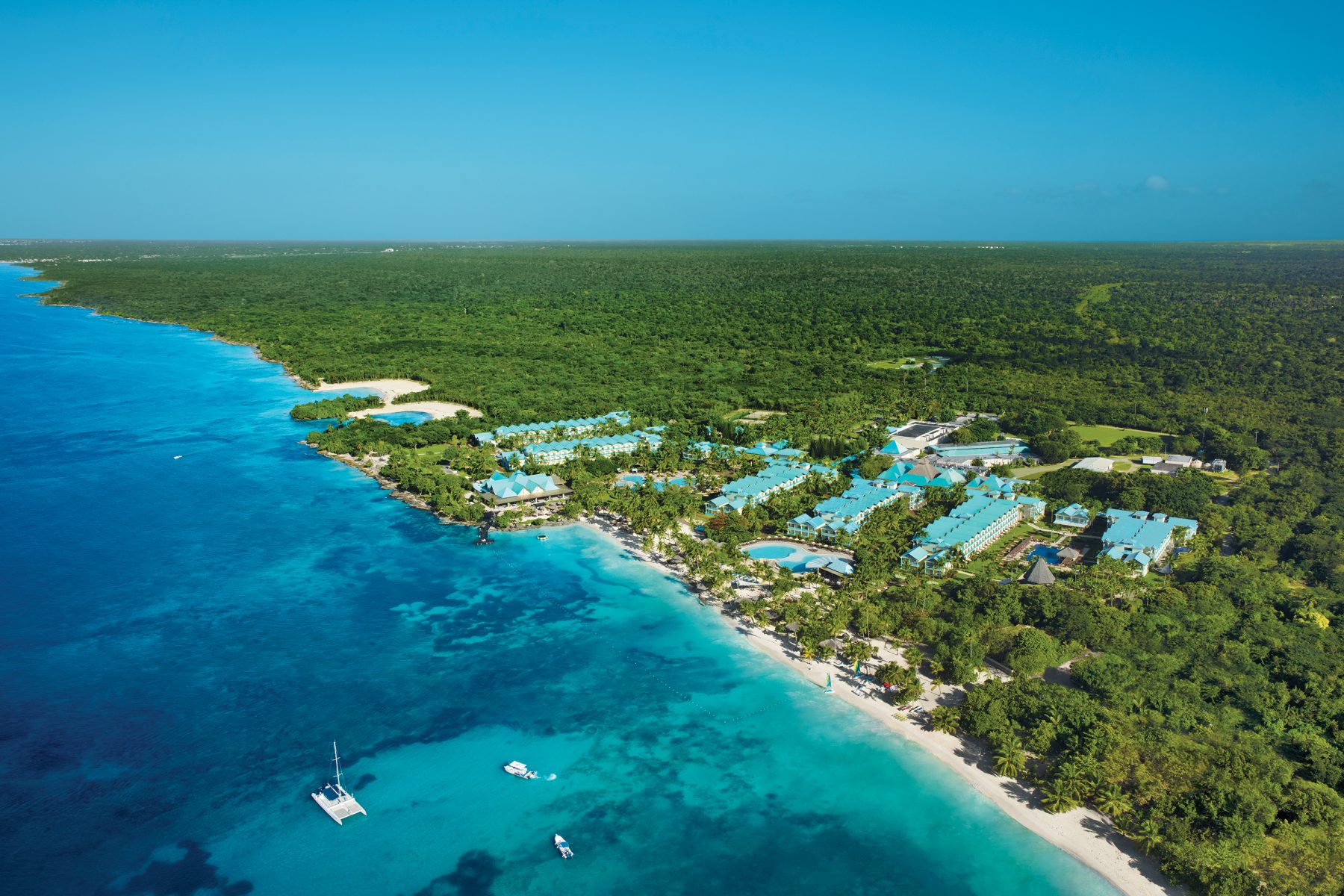




Join the Discussion!